
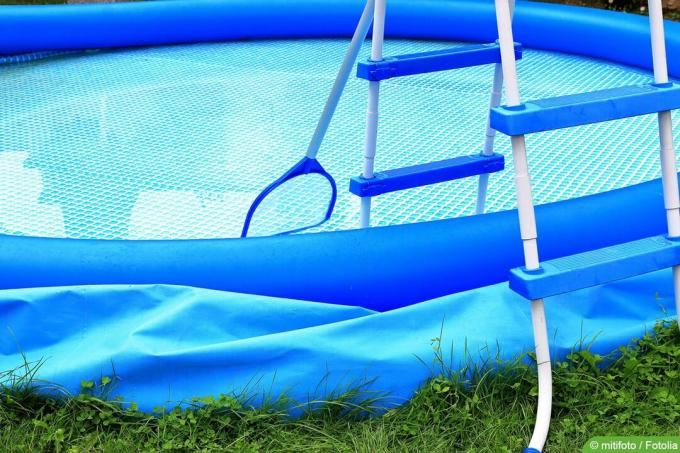
Table of contents
- Larvae and maggots in the pool
- Red larvae in the pool
- Black larvae in the pool
- Causes of larvae in the pool
- prevent mosquito infestation
- water quality
- clean water
- Clean pool
We clarify which animals are in the pool and why you should avoid an infestation as much as possible!
Larvae and maggots in the pool
The worm-like animals are not worms per se, but actually mosquito larvae. The female mosquito prefers to lay her eggs in standing water, from which swimming larvae subsequently develop. The type of mosquito can be identified visually by the color of the larvae:
- red larvae: midges
- white larvae: tussock midge
- black larvae: mosquito
A notice:
While the tufted mosquito is less common in this country, midges and mosquitoes are much more widespread.
Red larvae in the pool
Red worms in the pool indicate an infestation midges close. There are more than 1000 species of this mosquito in Central Europe alone, and there are even more than 5000 worldwide. Due to this diversity of species, mosquitoes and, accordingly, larvae in the pool can be expected at any time of the year:
- Early spring species: March April
- spring types: April May
- summer types: June July
- Autumn species: September October
Midges are among the less annoying specimens because, unlike mosquitoes, they do not bite. In fact, they are extremely useful, because the red mosquito larvae serve as a food source for amphibians and birds. Fish also like to eat the little worms, which is why the larvae are bred for this purpose and sold as fish food.
- Lifespan: a few days
- Body shape: slender, prominent mouthparts
- movement rhythm: meandering
Info:
Red mosquito larvae protect themselves from predators by retreating into self-made tubes.
Black larvae in the pool
If there are black worms in the pool, there is a high probability that they are the larvae of the hated ones mosquito. The annoying insects owe their name and bad reputation to the females, because they like to sting and then suck out the blood. This process is essential for insects to reproduce and subsequently produce eggs. However, the stings are not only unpleasant and annoying for us humans, but also dangerous to our health!
- Mosquito bites become very swollen and itchy
- allergy potential
- weakening of the immune system
- Transmission of diseases and bacteria
A notice:
The tropical diseases "West Nile and Zika virus" are now also widespread in Germany and can be transmitted via mosquitoes!
Causes of larvae in the pool
A pool offers insects of all kinds good shelter and optimal nesting opportunities, after all it is humid there almost continuously and sometimes even relatively warm. The insects not only lay their eggs on the water, but also in the tiniest corners and cracks. In areas that are difficult to access, the little animals are usually undisturbed, so that they can multiply and spread in peace. But not only the general site conditions, but also the weather and hygiene can promote mosquito infestation:
- unclean pool/water
- Contamination in the filter system
- insufficient cleaning before winter
- bad water quality

prevent mosquito infestation
To prevent larvae from entering the pool in the first place, pool owners can and should take certain precautionary measures. This is recommended insofar as finding the exact cause usually involves a great deal of effort and is not always possible. However, worms in the pool can be avoided with simple measures:
water quality
Water quality is not only essential for carefree splashing in the pool, it also ensures that mosquitoes do not spread unabashedly. It is therefore advisable to regularly check the water quality and pH value.
- pH: between 7.0 and 7.6
- Total Alkalinity: between 80 and 150 ppm
- Calcium hardness: between 200 and 400 ppm
- Chlorine values: between 1.0 to 3.0
A notice:
Chlorine is broken down by the sun over time, which is why the pool water must be chlorinated regularly!
clean water
Impurities in the water can be removed manually with a landing net, whereby one with a long gripper arm and very fine mesh is best suited for this purpose. With this, not only small insects, but also larger accumulations of larvae can be removed from the water. In addition, it is advisable to let the water run through a filter system and use a pool vacuum or pool robot.
Clean pool
Regular cleaning of the pool is directly related to the water quality and is also essential to prevent mosquitoes. The pool should also be cleaned thoroughly before wintering in autumn. Because this prevents mosquitoes from spending the winter in the pool area.
- drain the water completely in the fall
- clean entire area
- clean all equipment
- Disinfect niches, drains and inflows
A notice:
The pool cover also protects the pool from uninvited guests in summer and should be thoroughly cleaned in autumn at the latest!
 Home editorial office
Home editorial office
Learn more about water in the garden

How quickly does chlorine break down?
How quickly chlorine breaks down in pool water is important information for a number of reasons. It is important to know which factors play a decisive role in the degradation rate. This guide shows which influences are decisive.
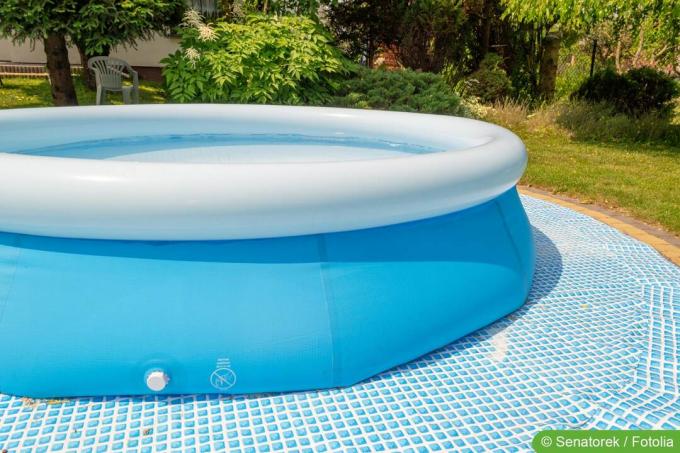
Too much chlorine in the pool: what to do?
If too much chlorine accidentally ends up in the pool or the chlorine value is inexplicably high, there are several measures you can take. This guide shows what can quickly and sustainably help and reduce the chlorine content.
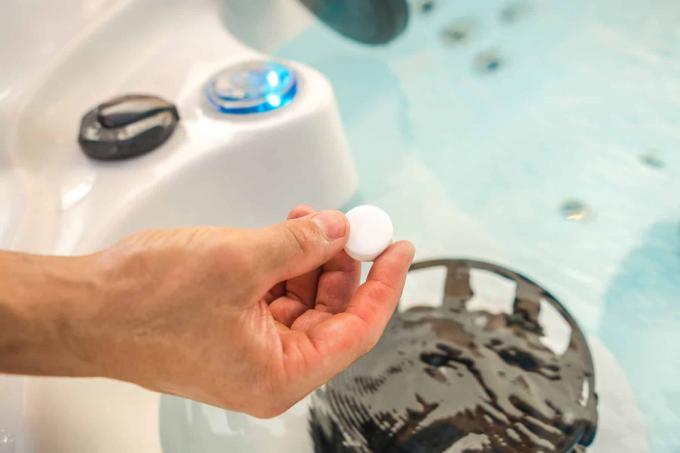
Too much chlorine in the pool: swim anyway?
If too much chlorine has ended up in the pool, the question immediately arises as to whether bathing is still possible. What risks can this entail and what are the warning signs? Here are the answers.
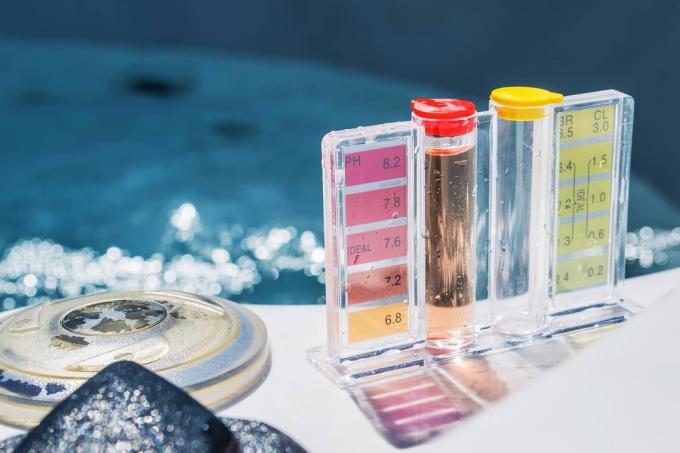
Reducing chlorine levels in the pool: chlorine levels explained
Is the chlorine level in the pool too high and bathing is not possible? Then good advice does not have to be expensive, because the chlorine values can be easily reduced in several ways and thus brought into the optimal range.
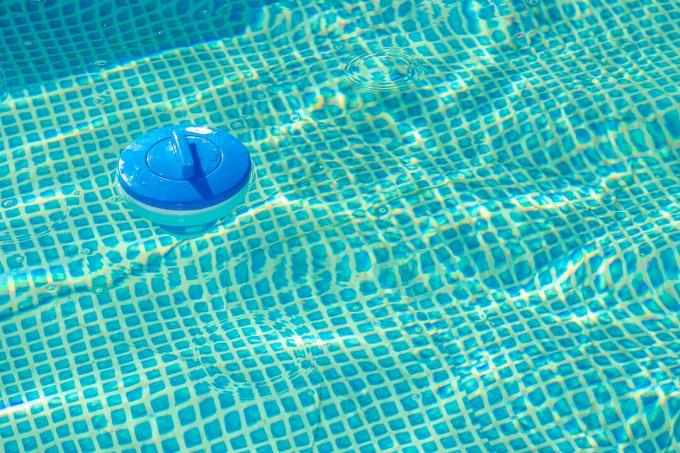
Pool initial filling: initial chlorination dosage
When the pool is about to be filled for the first time, the question of initial chlorination also arises. When and how is it carried out and what dosage is correct. This guide shows step by step how to do it.

How much chlorine in 1,000 liters of water?
Chlorine can keep pool water clear or, as shock chlorination, remove cloudiness and green discoloration. The question of how the right dosage and the optimal values look like arises again and again. This guide provides comprehensive answers.
